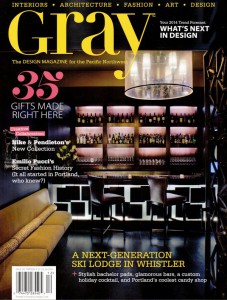Landscape and Life
Renowned Yakima Valley artist Leo Adams reflects on more than 50 years of painting
By Debra Prinzing | Portraits by Mary Randlett | Paintings photographed by Rob Prout
GRAY Magazine | December 2013/January 2014
Renowned Yakima Valley artist Leo Adams reflects on more than 50 years of painting
Artist Leo Adams’s worldview is simultaneously intimate and universal, a blend of his upbringing on Yakama tribal land and, later as a young man, studying art and architecture in Europe. Working in a rich, earth-hued palette, his canvasses depict rugged landscapes, cherished objects, and wild botanicals, all shot through with hints of mysticism and lore.
Today, at age 71, he works out of the home and studio he designed for himself on a knoll above Ahtanum Creek, at the very edge of the reservation in Yakima Valley. Oft photographed and widely published, the home reflects Adams’s genius as an artist and designer: It’s grand and elegant, and yet everything is fashioned from humble and foraged materials. The artist’s residence and paintings are the subject of a new book, Leo Adams: Art, Home, published in September by Marquand Books. Shortly after the book was released, Adams sat down with Gray to talk about his paintings and process. “I’ve never had a job of any kind other than being a painter,” he says. “It has been a wonderful experience to see the works I’ve done over the years collected together.”
ONLINE BONUS: Tour Leo Adams’s amazing home on the Yakama Nation tribal land
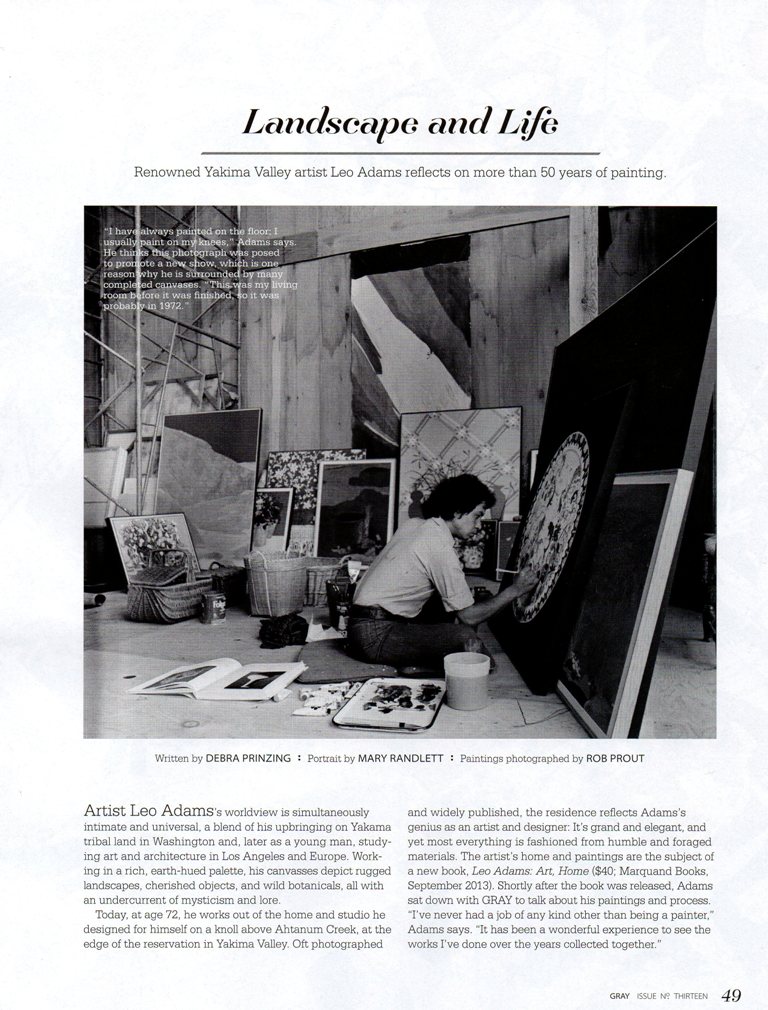
“I have always painted on the floor; I usually paint on my knees,” Leo Adams explains. He thinks this photograph was “posed” to promote a new show, which is one reason why he is also surrounded by many completed canvases. “This was my living room before it was finished, so it was probably in 1972.”
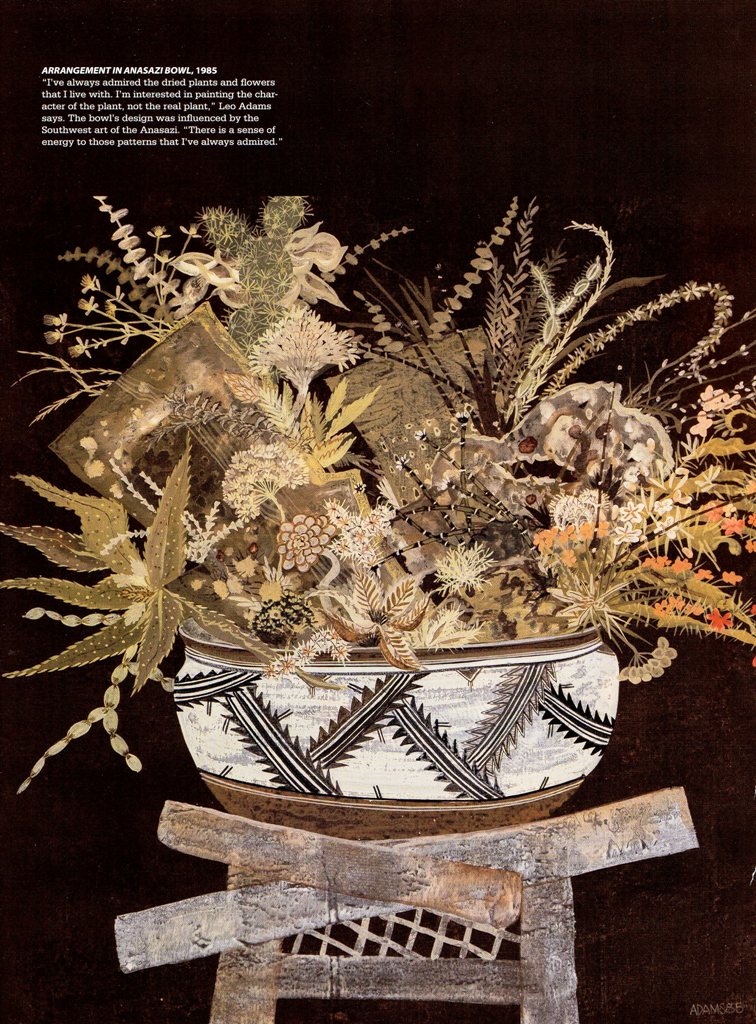
Arrangement in Anasazi Bowl, 331/2 × 331/2 in., 1985
“I’ve always admired the dried plants and flowers that I live with. I’m interested in painting the character of the plant, not the real plant,” Adams says. The bowl’s design was influenced by the Southwest art of the Anasazi. “There is a sense of energy to those patterns that I’ve always admired.”
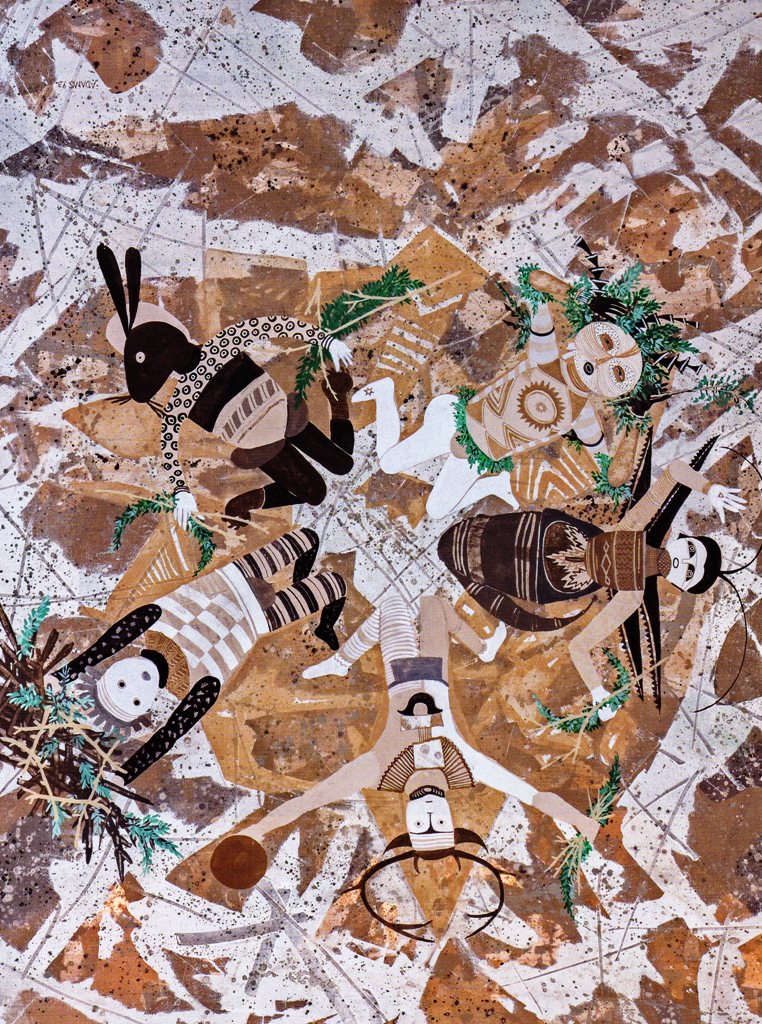
Sagebrush Society (detail), 711/2 × 521/2 in., n.d.
Based on mythology of the Yakama Indians, this painting depicts “Shamanism, witch doctors, and healing people,” Adams explains. “Some become deer-, rabbit- or insect-like. It’s very spiritual, but it also reveals a sense of friendship. There can be magic in the character of friendship, as well.”
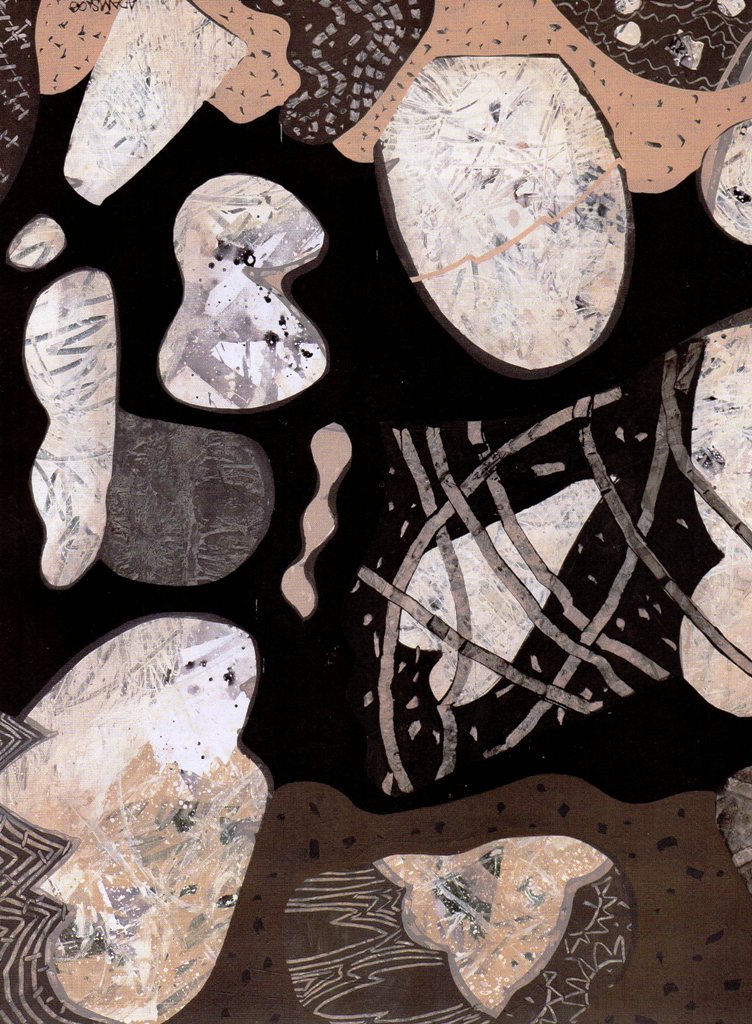
Caged Heart, 84 × 60 in., 2008
“This painting deals with a friendship I had with a man who had caged-in his heart. I worried about him,” Adams explains of the poetically titled piece. “It was my way of telling a young person to let go; my way of saying, ‘I don’t want you to be a lonely person. You just have to open up.'”
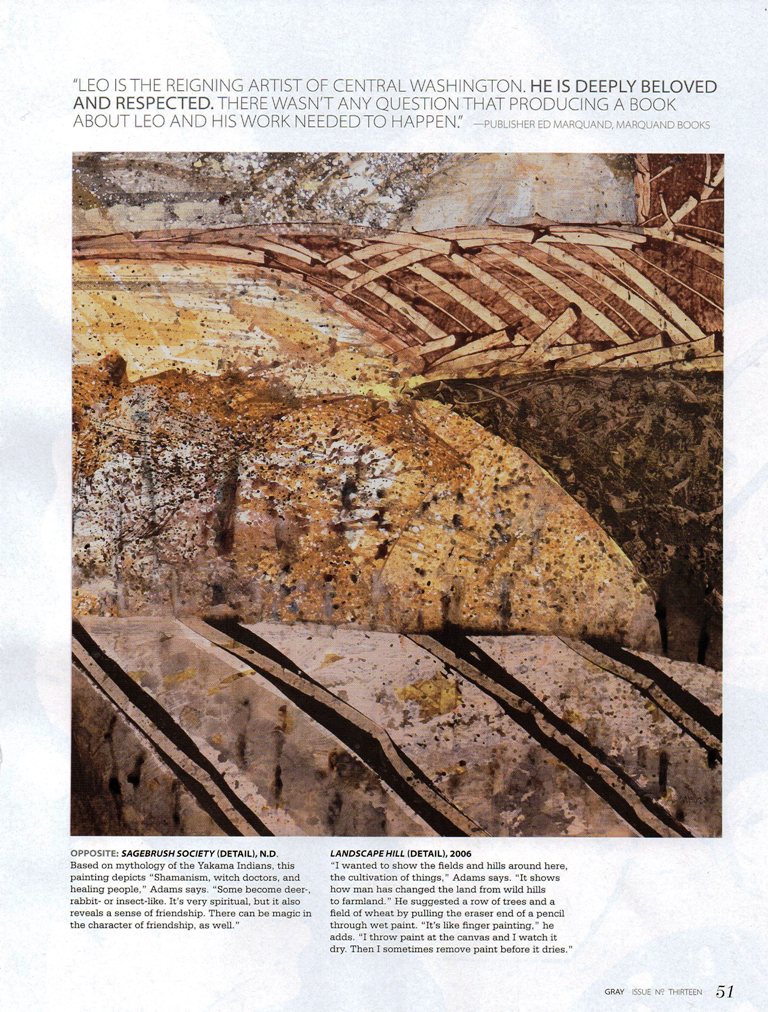
Landscape Hill (detail), 47 × 46 in., 2006
“I wanted to show the fields and hills around here, the cultivation of things,” Adams says. “It shows how man has come in and changed the land, from wild hills to farmland.” He suggested a row of trees and a field of wheat by pulling the eraser end of a pencil through wet paint. “It’s like finger painting,” he adds. “I throw paint at the canvas and I watch it dry. Then I sometimes remove paint before it dries.”
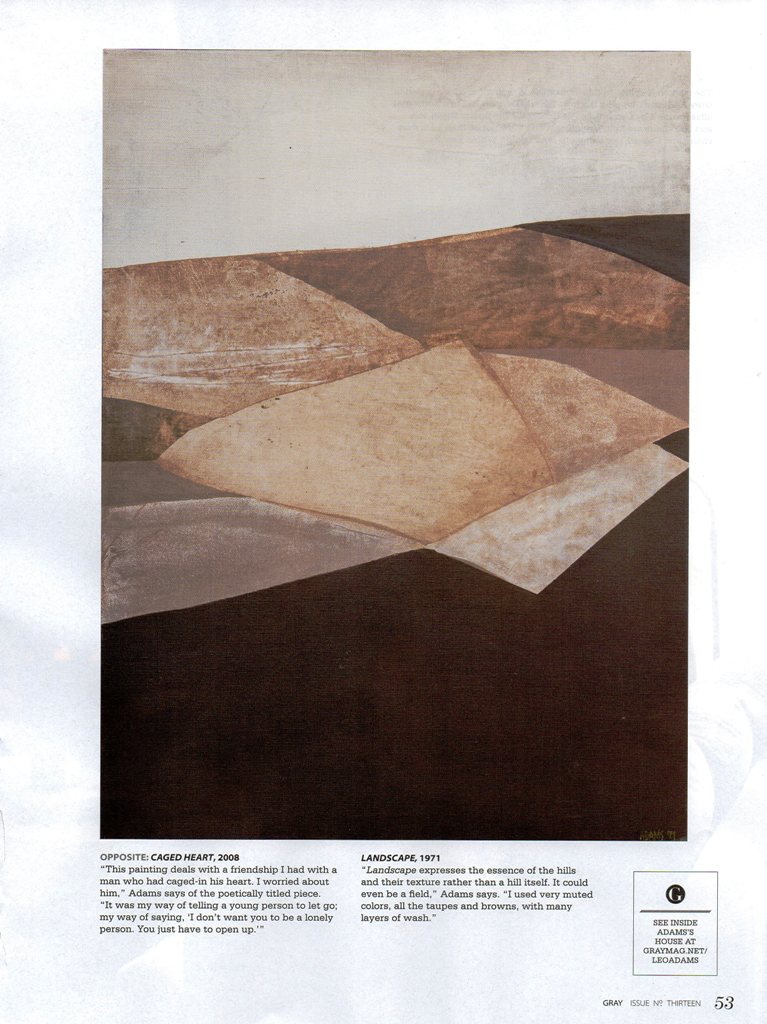
Landscape, 41 × 31 in., 1971
“Landscape expresses the essence of the hills and their texture rather than a hill itself. It could even be a field,” says Adams. “I used very muted colors, all the taupes and browns, with many layers of wash.”
Author’s footnote:
Debra Prinzing cherishes her Leo Adams painting, “Faded Bag,” painted in 2005.









